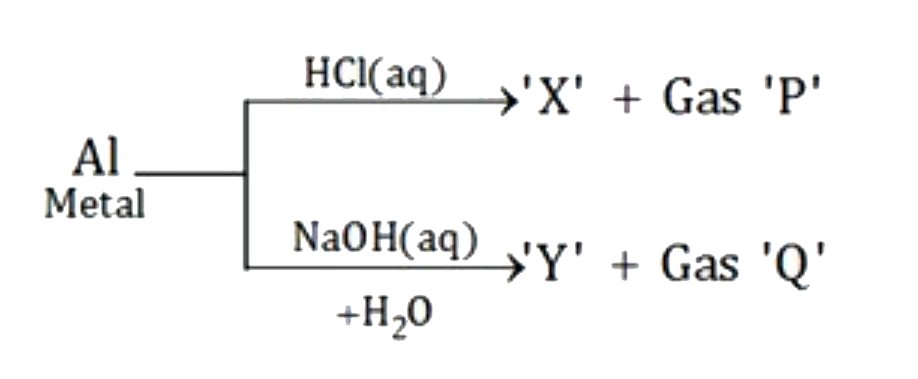The incorrect statement regarding transition elements is
They have low tensile strength
Their melting and boiling points are very high
They are good conductors of heat
Their density is very high.
The correct Answer is:A
To determine the incorrect statement regarding transition elements, let's analyze each option step by step.
Step 1: Understanding Transition Elements
Transition elements are metals found in the d-block of the periodic table. They include elements from Scandium (Sc) to Zinc (Zn) in the first series (3d), Yttrium (Y) to Cadmium (Cd) in the second series (4d), and Lanthanum (La) to Mercury (Hg) in the third series (5d). They are characterized by the presence of d-electrons.
Hint: Remember that transition elements are located in the d-block of the periodic table and have unique properties due to their d-electrons.
Step 2: Analyzing Tensile Strength
The first statement claims that transition elements have low tensile strength. Tensile strength refers to the ability of a material to withstand tension without breaking. Transition metals typically exhibit high tensile strength due to strong metallic bonds formed by the delocalization of d-electrons.
Hint: Consider the nature of metallic bonding in transition metals and how it contributes to their strength.
Step 3: Melting and Boiling Points
The second statement asserts that transition elements have high melting and boiling points. This is true because the presence of d-electrons contributes to strong metallic bonding, resulting in high melting and boiling points.
Hint: High melting and boiling points are often associated with strong bonding in metals.
Step 4: Conductivity
The third statement states that transition elements are good conductors of heat. This is also correct. The structure of transition metals allows electrons to move freely, facilitating the conduction of heat and electricity.
Hint: Think about how the arrangement of atoms in metals allows for the movement of electrons.
Step 5: Density
The fourth statement claims that transition elements have high density. This is true as well. Transition metals have relatively high atomic masses and smaller atomic radii, leading to higher density.
Hint: Density is influenced by both atomic mass and atomic size; heavier and smaller atoms generally result in higher density.
Conclusion
After analyzing all the statements, the incorrect statement regarding transition elements is that they have low tensile strength. In reality, transition elements possess high tensile strength due to strong metallic bonding.
Final Answer: The incorrect statement is: "They have low tensile strength."
Transition elements are metals found in the d-block of the periodic table. They include elements from Scandium (Sc) to Zinc (Zn) in the first series (3d), Yttrium (Y) to Cadmium (Cd) in the second series (4d), and Lanthanum (La) to Mercury (Hg) in the third series (5d). They are characterized by the presence of d-electrons.
The first statement claims that transition elements have low tensile strength. Tensile strength refers to the ability of a material to withstand tension without breaking. Transition metals typically exhibit high tensile strength due to strong metallic bonds formed by the delocalization of d-electrons.
The second statement asserts that transition elements have high melting and boiling points. This is true because the presence of d-electrons contributes to strong metallic bonding, resulting in high melting and boiling points.
The third statement states that transition elements are good conductors of heat. This is also correct. The structure of transition metals allows electrons to move freely, facilitating the conduction of heat and electricity.
The fourth statement claims that transition elements have high density. This is true as well. Transition metals have relatively high atomic masses and smaller atomic radii, leading to higher density.
After analyzing all the statements, the incorrect statement regarding transition elements is that they have low tensile strength. In reality, transition elements possess high tensile strength due to strong metallic bonding.
Topper's Solved these Questions
- d- AND- f- BLOCK ELEMENTSBOOK - ICSECHAPTER - d- AND- f- BLOCK ELEMENTSEXERCISE - EXERCISE (PART-I)(CORRECT THE FOLLOWING STATEMENTS BY CHANGING THE UNDERLINE PART OF THE SENTENCE : )
15 Videos
- d- AND- f- BLOCK ELEMENTSBOOK - ICSECHAPTER - d- AND- f- BLOCK ELEMENTSEXERCISE - EXERCISE (PART-I)(MATCH AND FOLLOWINGS):
1 Videos
- d- AND- f- BLOCK ELEMENTSBOOK - ICSECHAPTER - d- AND- f- BLOCK ELEMENTSEXERCISE - ISC EXAMINATION QUESTIONS (PART-II)(DESCRIPTIVE QUESTIONS)
15 Videos
- COORDINATION COMPOUNDS BOOK - ICSECHAPTER - COORDINATION COMPOUNDS EXERCISE - ISC EXAMINATION QUESTION (PART- II DESCRIPTIVE QUESTIONS)
39 Videos
- DISTINCTION BETWEEN PAIRS OF COMPOUNDS BOOK - ICSECHAPTER - DISTINCTION BETWEEN PAIRS OF COMPOUNDS EXERCISE - QUESTIONS
155 Videos
Similar Questions
Choose the correct statement regarding transition elements?
View SolutionThe incorrect statement regarding biogas is
View Solutionincorrect statement for transition element is
View SolutionIdentify the incorrect statement regarding tracheary elements of xylem
View SolutionThe incorrect statement regarding ethylene is
View SolutionIncorrect statement regarding AIDS is
View SolutionThe incorrect statement regarding lanthanoids is
View Solution
The incorrect statement regarding above reactions is:
View SolutionThe incorrect statement regarding below reaction is :

View Solution
The incorrect statement regarding above reactions is
View Solution
